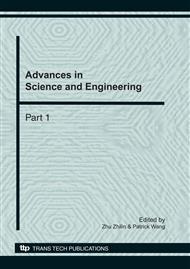p.331
p.335
p.341
p.347
p.354
p.361
p.366
p.372
p.381
Experiment Study of Rock Damage and Permeability Meso-Mechanical Coupling Failure Model under Complex Condition
Abstract:
Pore water pressure and the changes of crustal deformation, fault rupture and seismic activity has important influence. So the pore water pressure and load rock stress – hydro-mechanical coupling mechanism is very important. This paper mainly studies the rock specimens of hydraulic crack damage simulation. This study found: with the increase of the axial compression, sample is on the surface crack. Crack characteristics is smooth and continuously expanding. With the load increasing at the same time, the number of samples is also increased damage elements. The sample was through the cracks. This is due to the effect of water pressure to reduce the size of confining pressure .From the failure mechanism analysis, the distribution of stress non-uniform material will not uniformity, reflected in the actual rock because of the grain and the defects of the random distribution. When the load, the composition of force transmission effect of different deformation and stress in rock, the internal non-uniform stress concentration, local, it will directly cause the weak part, and micro cracks generated change the failure mode of materials.
Info:
Periodical:
Pages:
354-360
Citation:
Online since:
November 2010
Authors:
Keywords:
Price:
Сopyright:
© 2011 Trans Tech Publications Ltd. All Rights Reserved
Share:
Citation:


